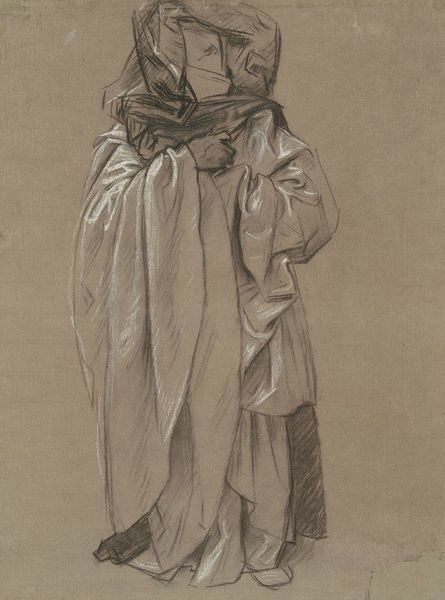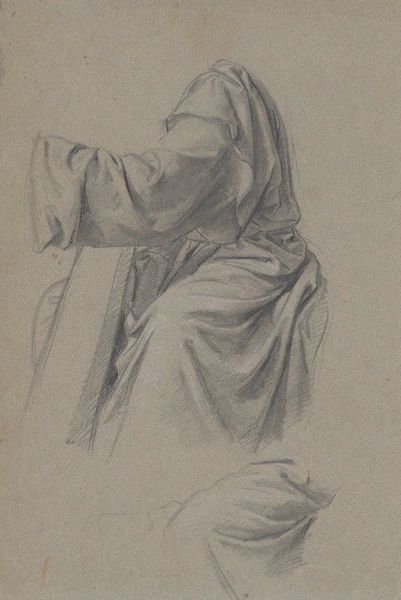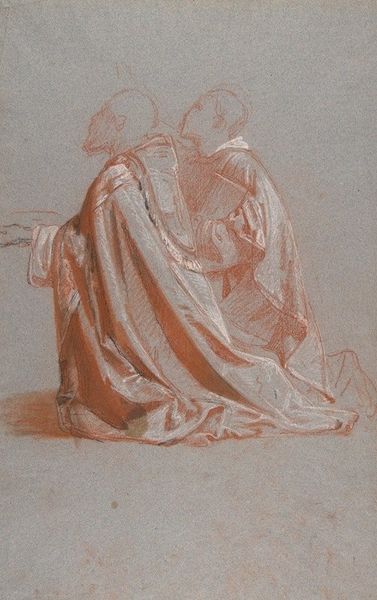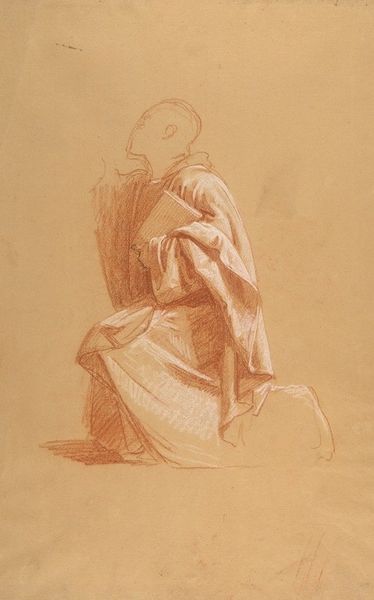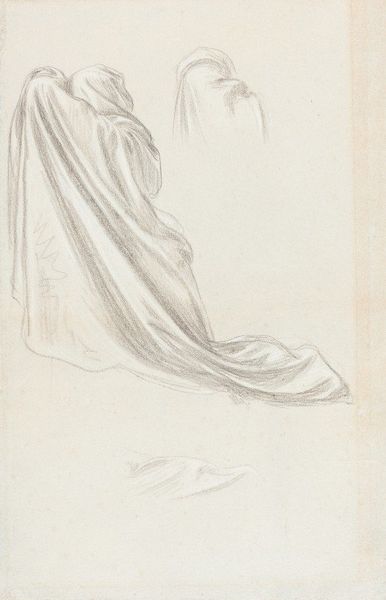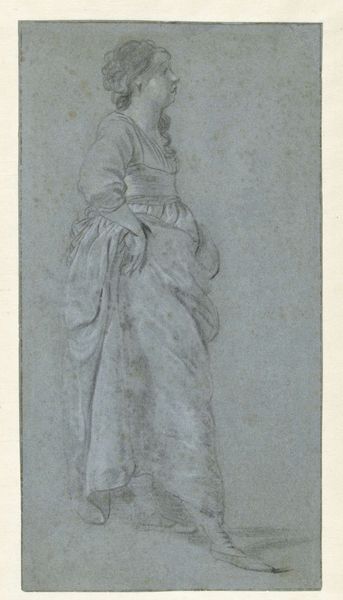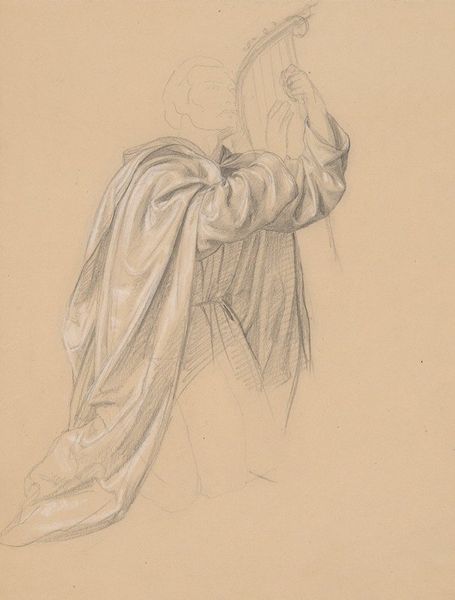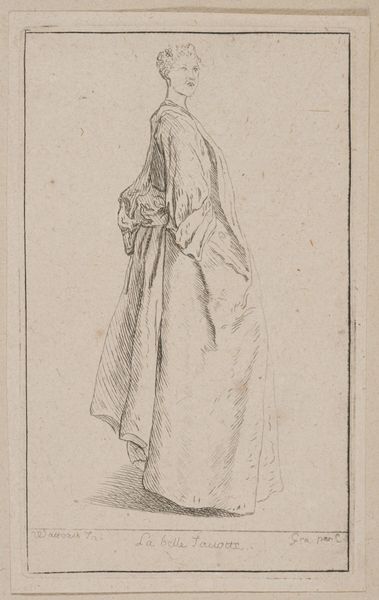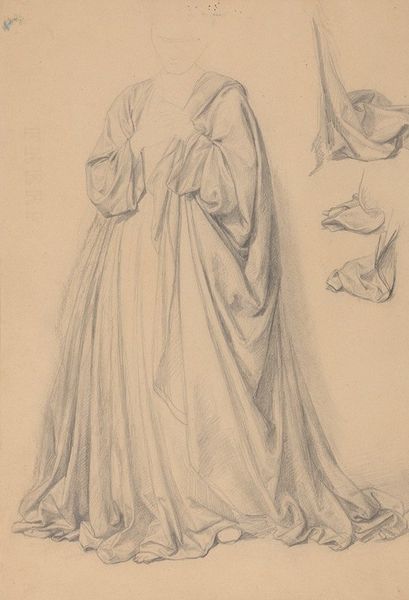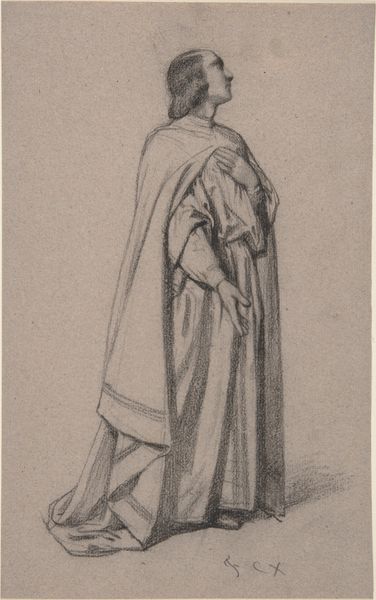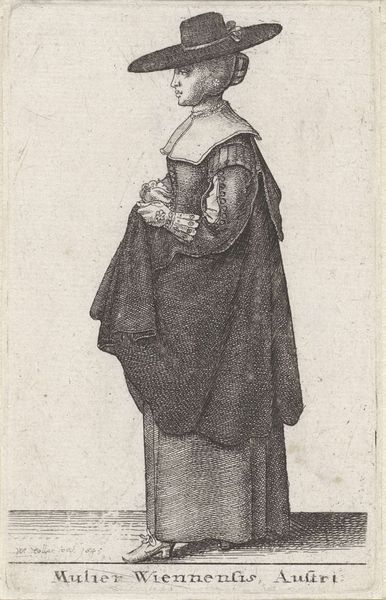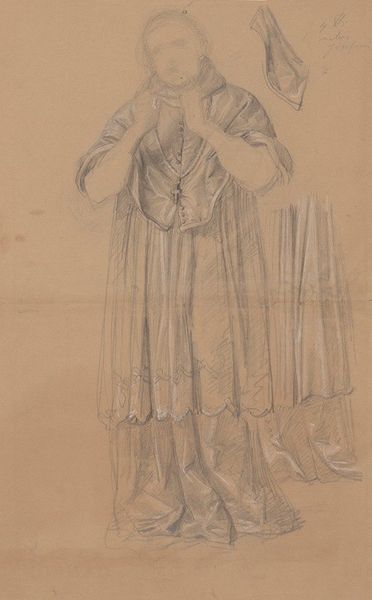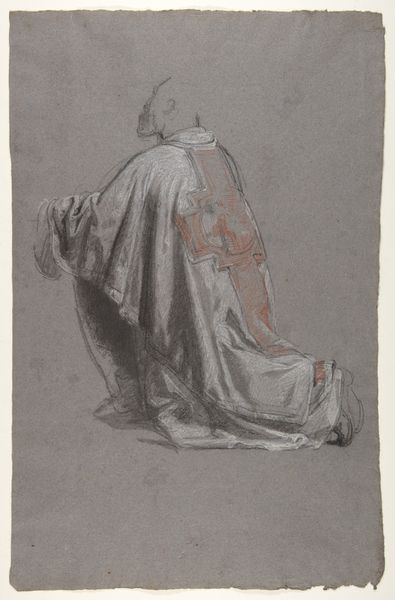
drawing, graphite
#
portrait
#
pencil drawn
#
drawing
#
pencil sketch
#
charcoal drawing
#
pencil drawing
#
graphite
#
portrait drawing
#
history-painting
#
academic-art
#
graphite
Copyright: Public Domain: Artvee
Curator: Isidore Pils's "Bishop," likely from the 19th century, presents us with a study in graphite. The portrait drawing leans into the Academic style so popular during Pils's career, yet has an undeniably quiet air about it. Editor: Yes, a sense of almost spectral serenity washes over me. I notice the unfinished sketch of the Bishop's face, which seems to fade into the drapery of the heavy, ornately decorated cape. Is it a cape or a robe? Curator: That's a keen question. In my understanding, Pils often aimed to capture particular figures representative of the Church or State within moments of intense social change, like after the 1848 revolution in France. So, perhaps that sketch against that grey suggests a premonition? Or anxiety about institutional change? Editor: It also hints at larger issues of representation, doesn't it? He doesn't need to fully render the man for us to conjure our own assumptions about the person who carries all that symbolic weight and ecclesiastical power. It makes me consider who gets to embody those power structures and the effects it has on society, especially considering the material wealth expressed in the lush fabric. Curator: That focus on wealth and symbol certainly dominated artistic and political debates throughout the 19th century. It appears this piece can provide a window into examining historical and contemporary issues regarding power, status, and visibility in today's social structures. Editor: Absolutely, and those echoes through time really make you question whose stories are being told, and whose remain hidden behind the weight of symbols. Curator: Yes, and how even a preliminary sketch can spark such significant contemplation of these concepts.
Comments
No comments
Be the first to comment and join the conversation on the ultimate creative platform.
